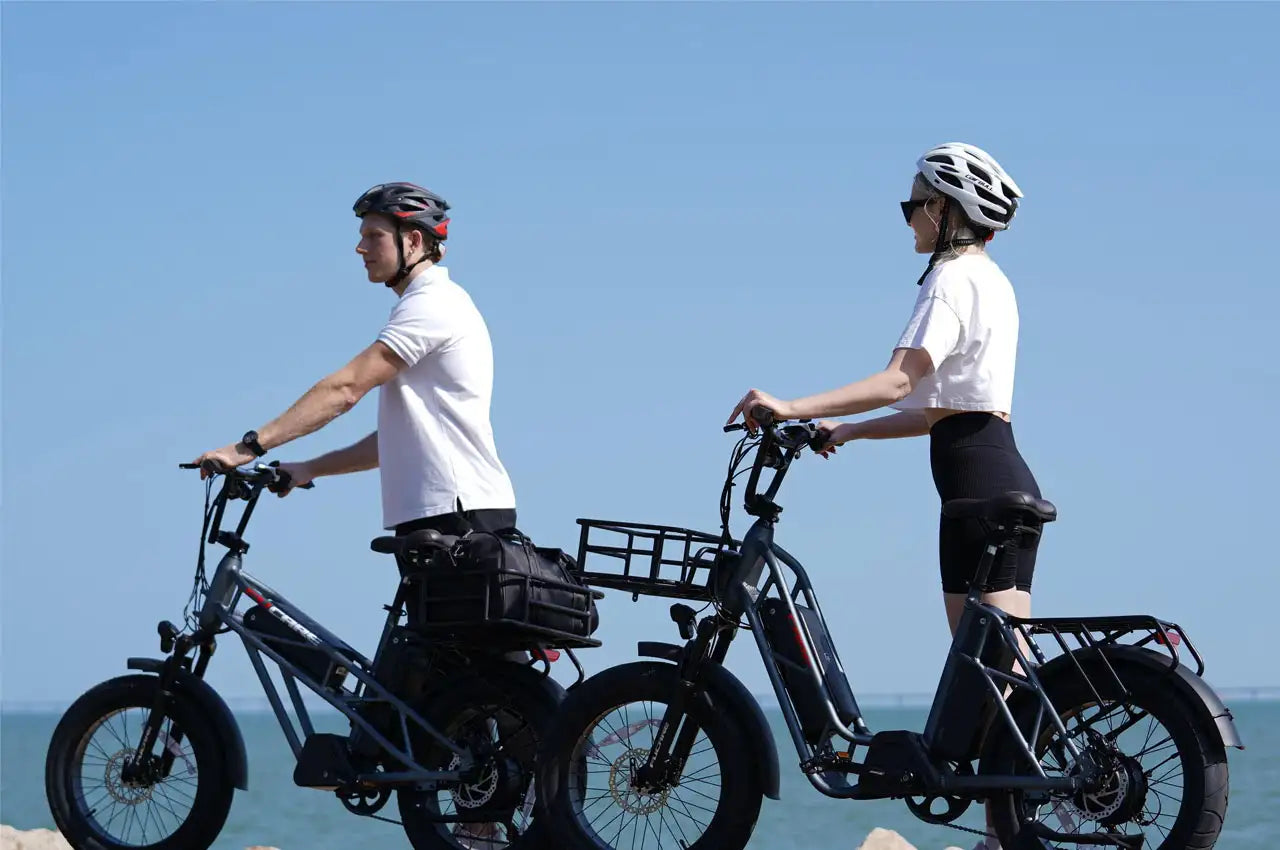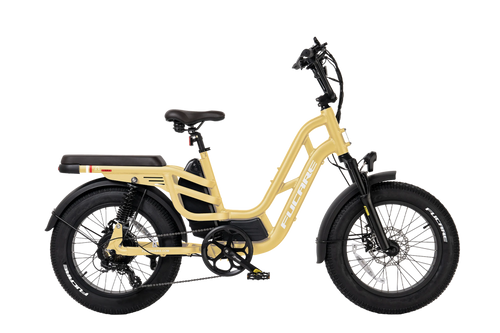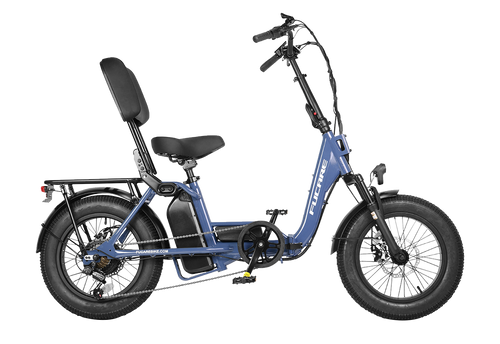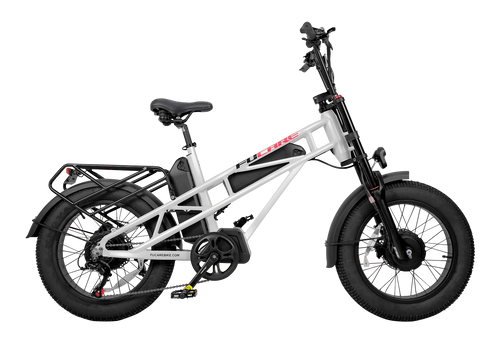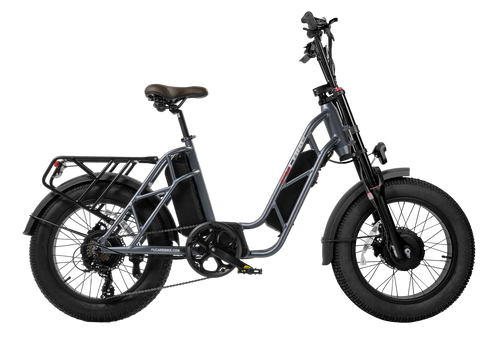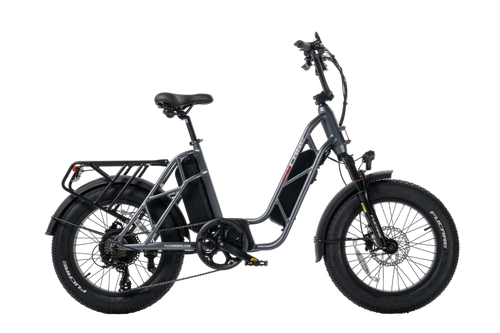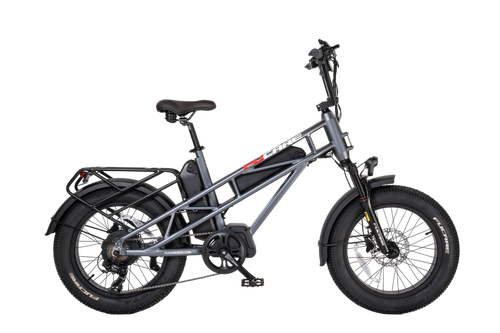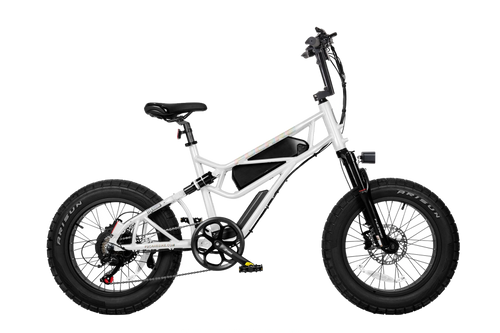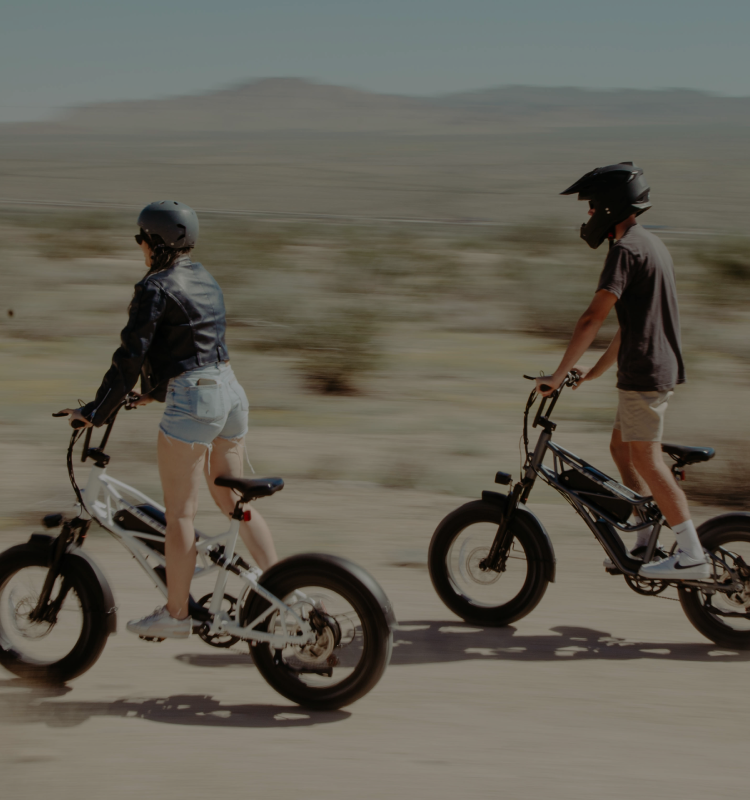Electric Bike Classes: Class 1 vs 2 vs 3 Comparison
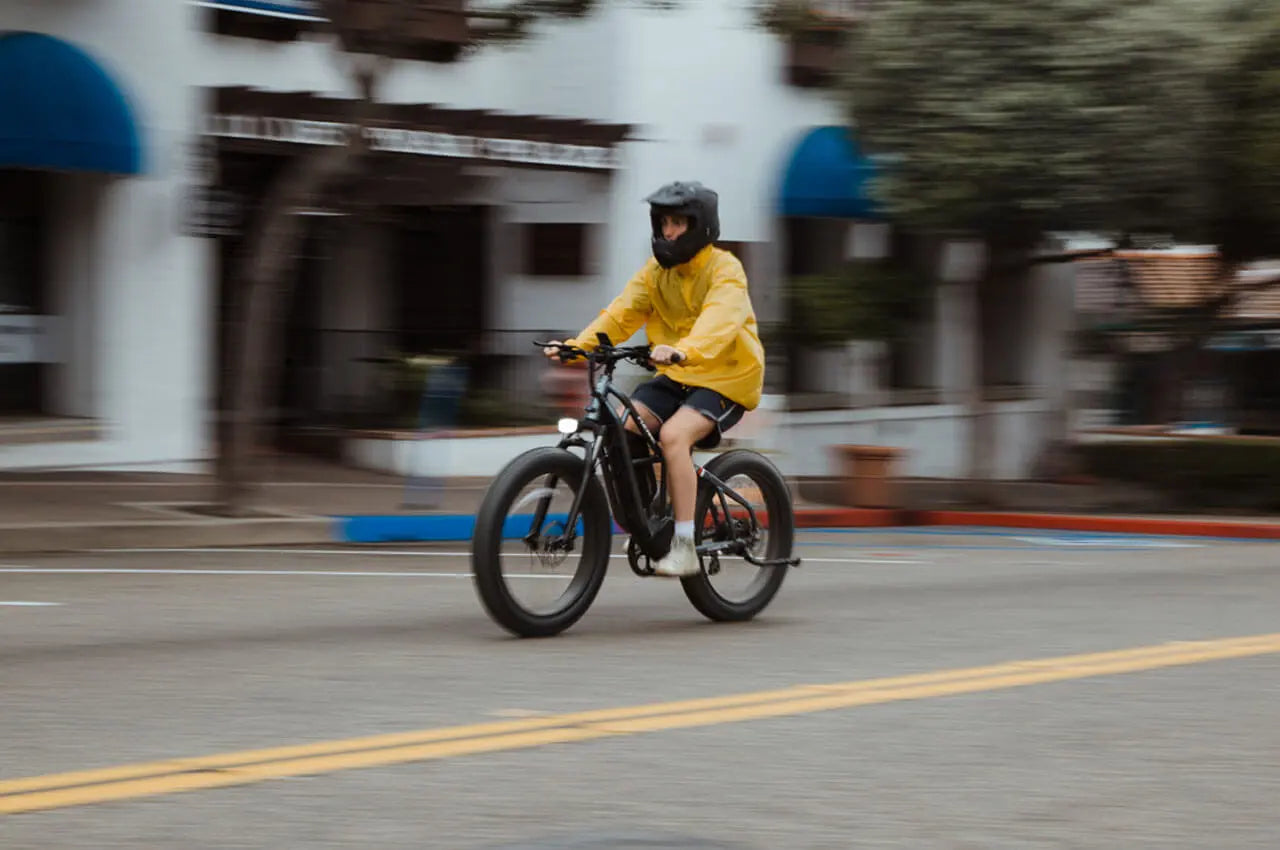
Hey there, e-bike enthusiasts! Hopping into the world of electric bikes can be exciting, but all the new terms and classifications can get a little confusing, right? Don't worry, we've all been there! Today, we're going to tackle a common question: what's the difference between Class 1, Class 2, and Class 3 e-bikes?
Understanding these classifications is crucial for choosing the perfect e-bike that aligns with your needs and adheres to local regulations. So, buckle up and get ready to become an e-bike class expert!
Join us as we uncover the following topics:
- What Is A Class 1 Ebike?
- What Is A Class 2 Ebike?
- What Is A Class 3 Ebike?
- Class 1 vs Class 2 vs Class 3 Ebike
- What is A Class 4 Ebike?
What Are the Classes of Ebikes?
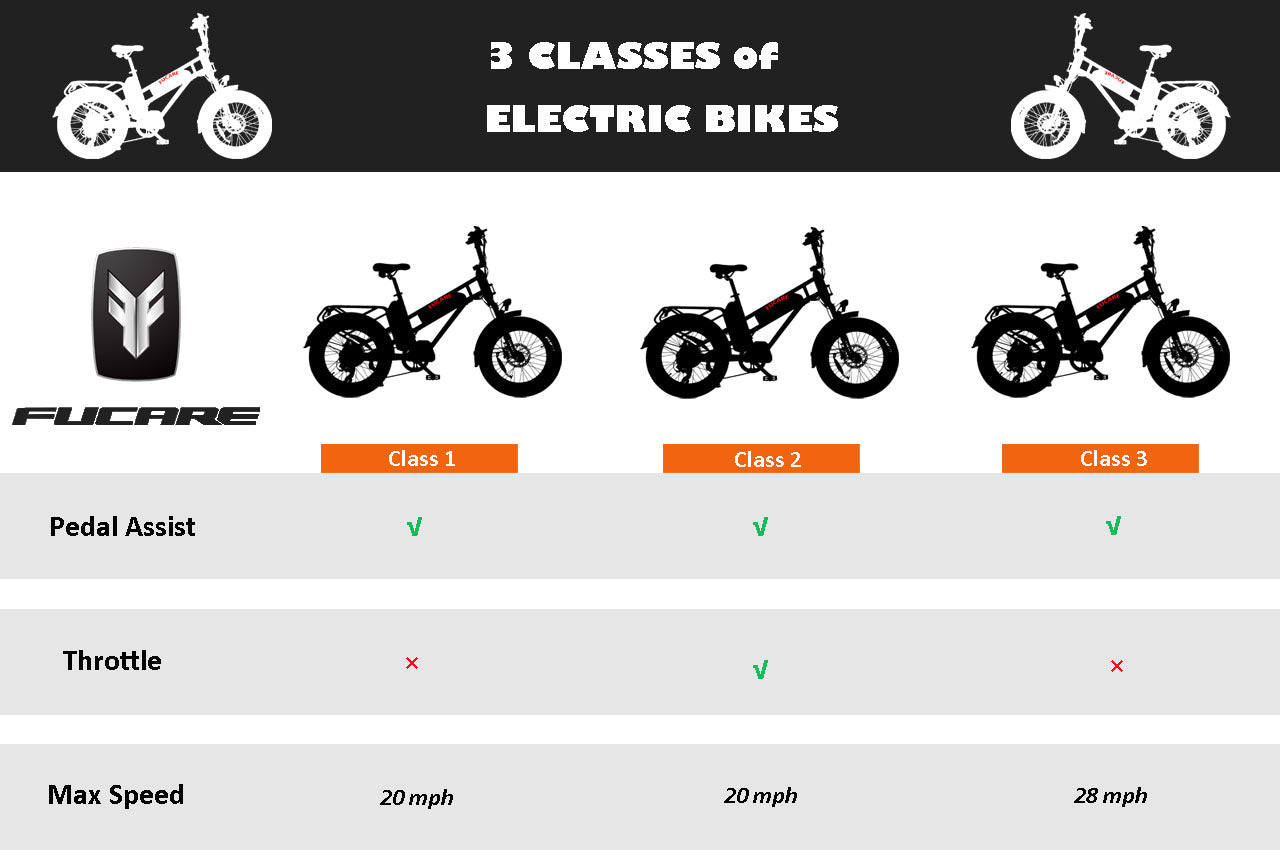
In 2002, the U.S. Congress passed HB 727, defining "low-speed electric bicycles" as two- or three-wheeled vehicles with working pedals, an electric motor of no more than 750 watts, and a top speed of less than 20 mph using motor power alone.
Federal laws allow states to create their own regulations for electric bikes. Many states are adopting rules similar to California's, which introduced three classes of electric bikes.
Currently, 41 states in the U.S. use this three-class system for electric bikes. While states may adjust some details, their systems are generally similar. The three classes are:
- Class 1: The class 1 e-bike provides assistance only when the rider is pedaling, and that ceases to assist when the bicycle reaches the speed of 20 miles per hour.
- Class 2: The class 2 e-bike provides both pedal assist and throttle operation, which is incapable of assisting when the bike reaches the speed of 20 miles per hour.
- Class 3: The class 3 e-bike provides assistance only when the rider is pedaling, and that ceases to assist when the bicycle reaches the speed of 28 miles per hour and must include a speedometer.
Among these 41 states, New York and New Jersey have unique aspects in their class 3 ebikes.
In New York, the definitions for Class 1 and Class 2 electric bicycles are the same as the industry standards. However, the definition for Class 3 is different.
In New York, particularly in cities with a population of one million or more, Class 3 Electric bicycles can be propelled exclusively by the motor and can reach speeds of up to 25 mph. The industry-defined Class 3 electric bicycles are not recognized or permitted in New York.
In New Jersey, Class 3 electric bicycles are classified as motorized bicycles and must follow different rules of the road compared to traditional bicycles.
What Is A Class 1 Ebike?
The electric propulsion system integrated into Class 1 electric bikes is activated solely through pedaling and is restricted to moderate velocities. In the United States, this category adheres to a maximum motor-powered speed of 20 mph (32 kph) and a motor wattage not exceeding 750 watts. Given its moderate pace and the necessity for pedaling input, these bikes merit equivalent rights and access privileges as traditional, non-assist bikes, enabling their usage on roads, designated bike lanes, shared bike paths, and unpaved trails.
Class 1 electric bikes are favored for their harmonious blend of assistance and traditional cycling feel, rendering them appealing to a diverse range of individuals, from daily commuters to leisure riders.
What Is A Class 2 Ebike?

The electric drive system of a Class 2 e-bike can be activated via a throttle mechanism like grip-twist, trigger, or button, while also having the option for activation through pedaling, similar to Class 1. In the United States, this class is currently subject to less strict regulations and is more commonly found. Its top speed is limited to 20 mph (32 kph), with a motor wattage of <= 750 watts, similar to Class 1.
Despite its slightly more restricted nature due to the possibility of operation without pedaling, Class 2 e-bikes still warrant similar rights and access privileges as traditional bicycles on paved surfaces. This means they should be permitted on streets, designated bike lanes, and multi-use bike paths.
Check Out Fucare Class 2 Ebikes
What Is A Class 3 Ebike?
Class 3 electric bikes feature an electric drive system activated by pedaling, enabling them to achieve higher top speeds. These bikes are recognized as the fastest "legal" electric bikes and do not necessitate a driver's license or license plate, with a maximum speed of 28 mph. Similar to Class 1 e-bikes, Class 3 models offer pedal assistance, but they can attain greater velocities. While they may also include a throttle, its speed is limited to 20 mph. In many parts of Europe, where throttles are less common, most Class 3 electric bikes solely offer pedal assistance.
Due to their swifter speeds, Class 3 e-bikes often face specific regulations, including age limits and designated riding areas. To determine the age limit and which trails and bike paths near you are restricted to Class 3, it's advisable to contact state or local authorities. Additionally, Class 3 e-bikes are mandated to have speedometers.
You might be surprised to learn that some e-bikes, like the Fucare models, offer the ability to adjust their class at the touch of a button. That's right, your e-bike isn't confined to a single pre-set class!
Imagine owning an e-bike that seamlessly transforms from a leisurely Class 2 cruiser, offering pedal-assist up to 20 mph, to a zippy Class 3 speedster, reaching speeds of up to 28 mph. This innovative feature empowers you to tailor your riding experience to your specific needs and preferences.
This flexibility also opens doors for shared e-bike experiences. Let's say you have a family member who's new to e-bikes and prefers a slower, more relaxed ride. You can easily toggle the settings on your Fucare e-bike to Class 2, ensuring a comfortable and safe journey for them. Then, when it's your turn to hit the road, you can switch to Class 3 and enjoy a more exhilarating ride.
While e-bike class flexibility adds a layer of convenience and personalization, it's crucial to remember local regulations. Always check your local laws to ensure your chosen class and speed settings comply with regulations in your area. Safety is paramount, so responsible riding is key.
Check Out Fucare Class 3 Ebikes
Class 1 vs Class 2 vs Class 3 Ebike
| Feature | Class 1 | Class 2 | Class 3 |
| Motor Engagement | Pedal-assist only | Pedal-assist or throttle | Pedal-assist only |
| Top Speed | 20 mph | 20 mph | 28 mph |
| Riding Experience | Traditional cycling feel with assistance | More flexibility, easier hill starts | Powerful and fast |
| Regulations | Generally more relaxed | May have restrictions in certain areas due to throttle | May have stricter regulations and helmet requirements |
| Ideal Use | Leisure rides, trails, paths | Commuting, mixed terrain rides | Long commutes, challenging terrain, speed enthusiasts |
In the electric bike arena, choosing the right "class" is like picking your perfect teammate – each offering unique strengths to power your ride. Buckle up as we compare Class 1, 2, and 3 ebikes, highlighting their distinct features and their strengths against each other.
Class 1 vs Class 2 first face off in the activation zone. Class 1 relies on pedaling to engage the motor, whereas Class 2 offers the convenience of throttle propulsion without the need to pedal. However, both classes are bound by a shared speed limit of 20mph.
Next, Class 2 vs Class 3 enter the speed scramble. Class 2 maintains the 20mph limit, combining throttle and pedal assistance. In contrast, Class 3 abandons throttle propulsion, relying solely on pedal assistance, but delivers an increased speed capability of up to 28mph.
Finally, Class 1 and Class 3 face off in the activation versus speed battle. Class 1 adheres to the 20mph threshold, requiring pedaling to activate the motor. Conversely, Class 3 elevates the speed potential to 28mph, albeit solely through pedal assistance.
What is A Class 4 Ebike?
Beyond the three established electric bike classes, there exist electric bike variants that diverge from the standard classifications, informally termed as Class 4 ebikes.
Class 4 electric bikes surpass the parameters of traditional classes, boasting speeds exceeding 28 mph and motors generating more than 750W. Recognized as motor vehicles in the majority of jurisdictions, they entail licensing and registration obligations and are restricted to specific trails or roads. These bikes may feature either throttle or pedal assistance systems, or sometimes both. Across most states and countries, operators of Class 4 e-bikes are typically required to be at least 16 years old and adhere to wearing protective gear while riding.
Choosing the Right Ebike Class
Ebike classes differ in their top speed and equipment. Class 1 uses pedal-assist only to reach 20 mph, offering a natural cycling experience. Class 2 adds a throttle for easier starts and maintains a 20 mph limit. Class 3 boasts the highest speed of 28 mph but relies solely on pedal-assist.
Remember, ebike regulations vary significantly by location. While most states using the three-class system don't require registration or insurance for ebikes, they mandate a visible label displaying class, top speed, and motor wattage. If you reside in a state outside the three-class system (New Mexico, Alaska, Massachusetts, etc.), consult your local authorities for licensing, registration, and insurance requirements. California, in particular, has unique ebike regulations, so be sure to check their specific laws.
Happy and informed riding!
Continue reading
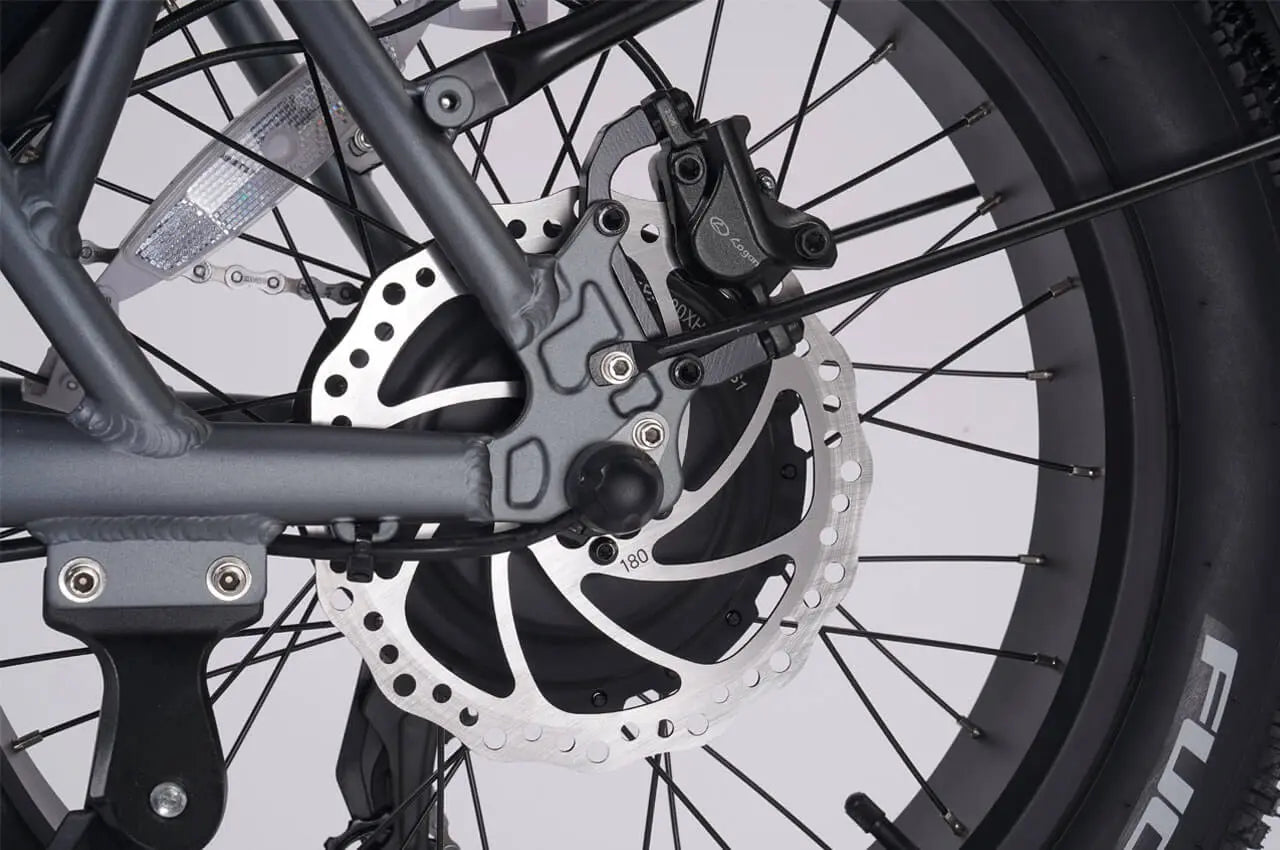
Mechanical Disc Brakes Vs Hydraulic Disc Brakes For Ebikes: Which Wins?
